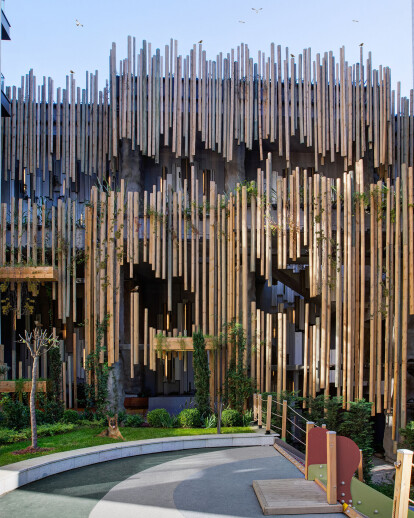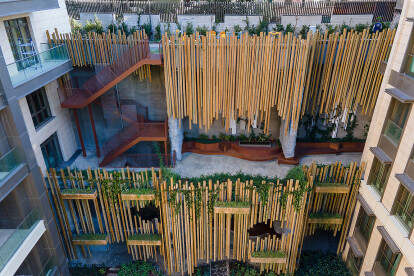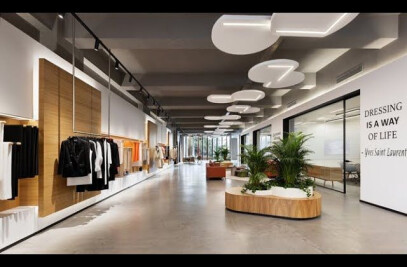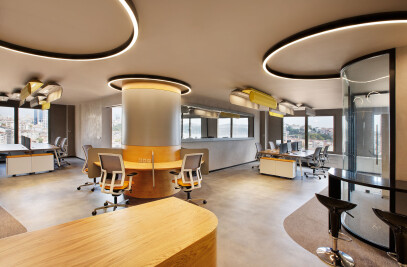Instincts that people have due to their existence, such as survival, access to food and protection came until today as a genetic legacy. Examples such as the urge to be in a place with a good viewpoint in the built environment to be protected against dangers, the desire to be in a safe space to seek shelter and feel secure, the desire to be outside or close to water and food instead of indoors are reflections of this genetic legacy on our daily lives.

If we ask an urbanite the kind of environment they would like to be and live in, they are likely to give an answer that directly points to nature and natural life. Because every passing year, humankind drifts apart from nature even more. The desire of humanity to connect with nature makes them feel good, peaceful, happy and allows them to fight diseases easily. Therefore, as the urban population increases, the urbanite's desire to be in touch with nature and their struggle for self-sufficiency will grow. In reaction to the decrease of natural areas, the number of practices in which nature is encompassed in the built environment will increase.

The biophilic design approach plays an important role here. Due to nature's healing and improving well-being uses on people, it is crucial to include nature in our living spaces starting from the planning stage. Nature would inspire the design and biological data would be discussed within the design studies. Subcomponents such as form, shell, material, color and technology would evolve based on nature and biology, allowing the built environment to come to life as eco-friendly.

Researches show that people living in areas connected to nature are happier, more social and more interactive. Furthermore, according to the "Ecological Valence Theory", people show interest in objects and stimuli that arouse positive emotions in them and make them feel good. Color, material, texture are some main examples of these factors. This can also be explained with instances such as the calming influence of green and blue, green increasing creativity, and yellow giving energy and happiness.
In addition to all this information, the facts of life show us that the need for housing continues to rise due to urbanization and the ever-growing urban population. At this point, every passing year the number of qualified residential projects is increasing. Piyalepaşa İstanbul, a brand residential project, is an example of these solutions.

Turkey's first outdoor biophilic project on this scale with previously explained specific purpose was designed and projected in Piyalepaşa İstanbul by the Mimaristudio team, led by Ayça Akkaya Kul and Önder Kul. While the project's public space was curated by Gökhan Karakuş, the project and design process were directed by Ruşen Taşpınar. This project’s aim was to transform two existing reinforced concrete structures connecting three separate residential blocks into a biophilic outdoor living space, with the implementation of fourteen biophilic design patterns starting from the planning stage.
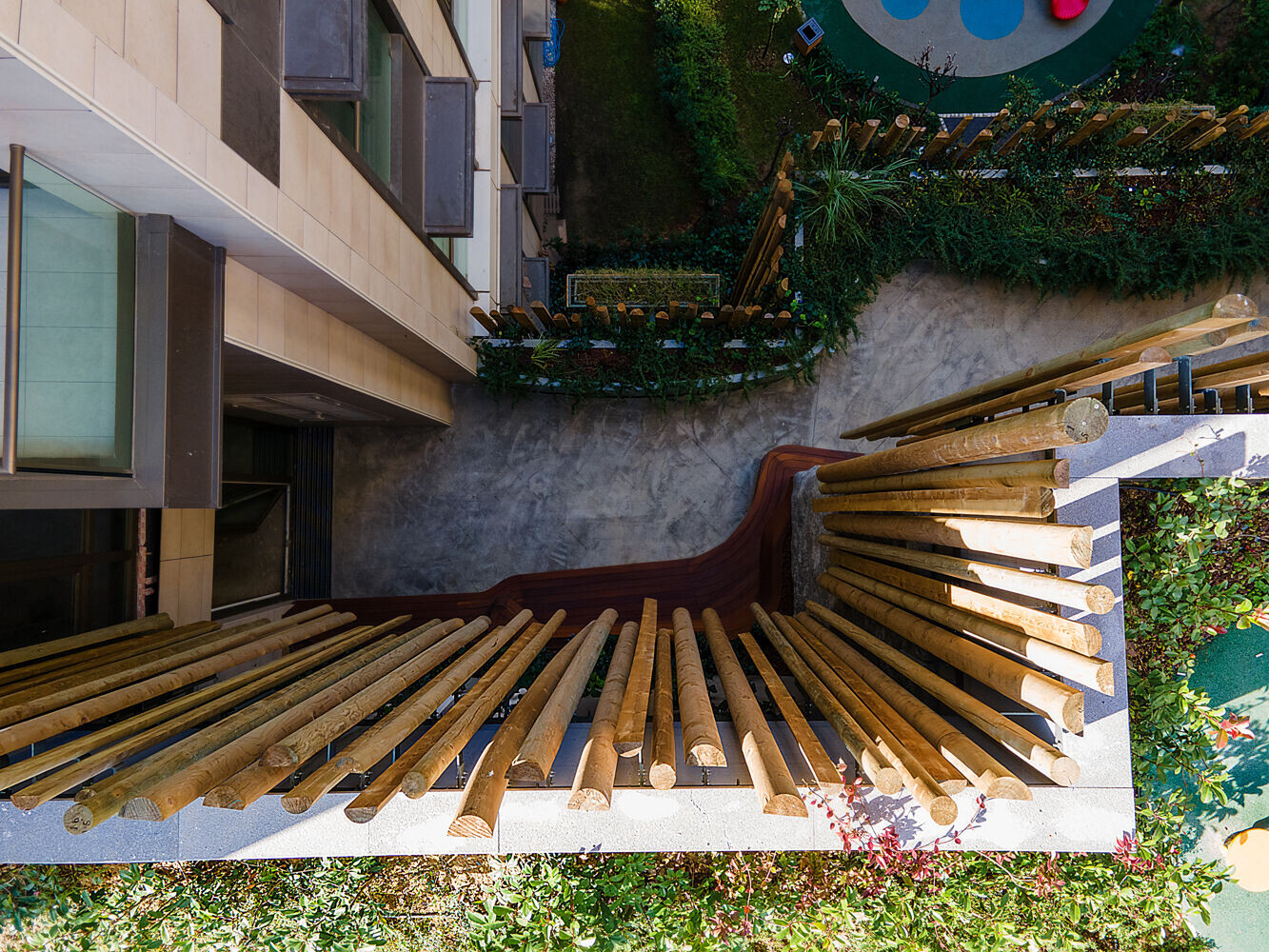
Two structural connector areas with a completely open front side; only consisting of a structural system, a floor slab, and vertical circulation axes connecting them are located in two separate areas within the campus. The project was implemented in two phases: during the first phase, the designed space was reserved to serve its own area and two separate residential blocks connected to it. In the following phase, access to the upper-level entrance of the campus and the circulation at this level was granted with a staircase made of steel. In both phases, a relationship of “interior and exterior” has been established outdoors by an interface created in an organic form by using wood. With this interface, a semi-transparent connection was formed between the living areas planned at different levels within the building and the main residential campus. This interface also provides visual contact via the natural openings within its organic structure, allowing direct sunlight to be carried indoors through these gaps. The landscape areas created on the floors and on the interface allow the greenery that will grow to cover the interface by following a vertical axis. Owing to the selected vegetation, it is possible to observe the changes in color, texture, and structure of nature on this interface during seasonal transitions.

The project includes biophilic design patterns under the titles of “Nature in the Space”, “Nature of the Space” and “Natural Analogues”. “Visual Connection with Nature”, one of the steps followed in the project under the title of “Nature in the Space”, was established by linking the approach to natural elements within the space with living systems and natural processes. The space is not only designed for people; it is also intended that the birds, butterflies, pets and many other creatures can use the area or even take shelter here. While the “Non-Visual Connection with Nature” pattern is about the activation of auditory, haptic, and olfactory stimuli; the “Non-Rhythmic Sensory Stimuli” addresses strengthening the feeling of being in a natural environment and allowing seasonal and temporal changes to be perceived within the space by providing heat and airflow variability, making use of different light intensities and shadows and changing the light setting throughout the day.

Three biophilic design steps under the title of "Natural Analogues" were also applied in the project. The "Biomorphic Forms and Patterns" step includes permanent texture and form arrangements such as patterns and amorphous forms applied to façade, walls, columns, floors, landscaping areas, and seating groups. Secondly, the “Material Connection with Nature” step describes the use of materials from nature with minimum processing, and creating a sense of natural space. And lastly, the "Complexity and Order" step ensures that the complexity and order of nature are adapted to the spatial design on various aspects ranging from facade to furniture design.

Finally, the four biophilic design patterns under the “Nature of the Space” contain the instincts and emotions of human beings, which have come down to the present day as a genetic heritage, within the spatial design. To outline these patterns briefly; “Prospect” indicates the ability to see the open area and provide an unobstructed view from specific parts of the space. "Refuge" pattern explains the planning of proper areas within the space to retreat from environmental factors and be protected. "Mystery" is about the variety areas that evoke the curiosity of the user as they walk through the space, allowing them to think and imagine the next step. Ultimately, "risk and peril" can be defined as arousing excitement and minor fears in people through different sections of the space (for instance, the feeling of climbing stairs or looking down from a high elevation).

In conclusion, every action to be taken by focusing on the natural environment, our world, our future, and humankind are valuable. Starting from the research and planning stage; if we develop the city planning, architecture, and interior design processes based on biophilic design and well-being approaches by focusing on users, we would have a built environment that also appeals to sentiments and has a stronger connection with nature and real life.
Team:
Arch. Design and Project: mimaristudio
Architects: Ayca AKKAYA KUL, Onder KUL
Client: Piyalepaşa Real Estate Company
Public Space Curator: Gokhan Karakus
Design Team: Kaan GULKIRAN, Enver KUDA
Project and Design Director: Rusen TASPINAR
Piyalepasa Project Team: Jale Tuma, Sevtap Sezgin
Lighting Design: mimaristudio
Public Furniture Design: mimaristudio
Photo Credits: Gurkan Akay
Landscape Design: Piyalepasa Project Team
Landscape Work: Cem Botanik

Material Used:
Outdoor Lighting: Tepta
Flooring and Wall Panels: Urban Atölye
Steel work: Berat Demir
Steel staircase: Arstek Metal
Wood work: Ramtaş
